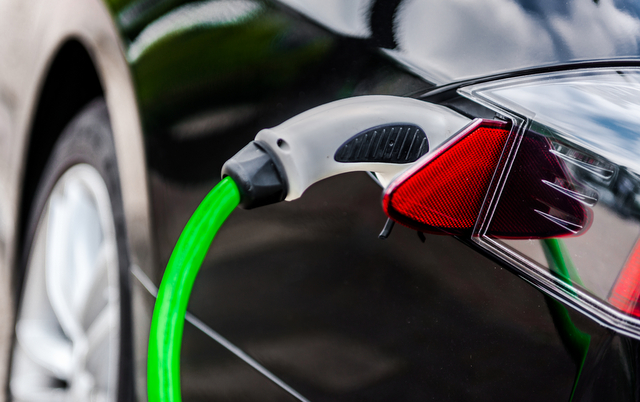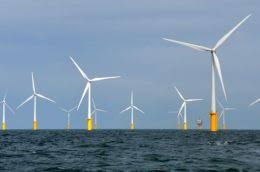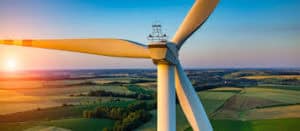It’ll take more than just driving an electric vehicle to save the environment. You’ll have to charge it at the right time, too.
Put simply, if the world’s drivers plug in an increasingly large EV fleet right after work, it could undo many of the environmental benefits expected from fewer cars running on gasoline and diesel. Cutting pollution could come down to an act as unexceptional as waiting until bedtime to charge the minivan.
Down one path lies a future world with cleaner skies, cheaper energy and more reliable electricity systems. The other has more fossil fuel-burning generators, higher power prices and additional strain on the grids keeping lights on everywhere from hospitals to schools.

“The key question isn’t how much demand electric vehicles add to the grid, it’s when does it add it,” said Daniel Brenden, a senior power and renewables analyst at BMI Research in London. “EVs are either going to be huge problem or a huge tool.”
Sales of electric passenger vehicles surpassed 1 million for the first time in 2017. Forecasts for future growth vary wildly: Exxon Mobil Corp. expects the global fleet to swell to 100 million vehicles by 2040, while Bloomberg New Energy Finance sees it reaching 540 million units by then, with more than half of all cars sold being powered by electricity.
Even at the high end of estimates, global electricity production would need to increase by just 5 percent to meet the new vehicle demand, said Colin McKerracher, an analyst with Bloomberg New Energy Finance. The new generation may not even require new power plants if grid operators, regulators and drivers can get on the same page as far as timing goes, McKerracher said.

That’s because of the unique structure of the power market, in which demand ebbs and flows minute-by-minute during the day as people flick their lights and appliances on and off. Consumption typically peaks in the evening and morning, and is at its lowest in the middle of the night.
If drivers plug in their cars when they get home from work and add to that evening peak, even the modest amounts of new generation needed will likely require building more capacity, and that likely will have to be in the form of fossil fuel-fired plants, Brenden said. And because the owners of those plants will have to pay down debt while only operating a short time of the day, their rates will have to be higher.
“You’re not contributing to decarbonization as much as you’d like, and you’re paying to keep that backup generation ready, so you’re adding to your electric bill,” Brenden said.

There’s another option, though, McKerracher said. If drivers can charge their vehicles during off-peak times, they may be able to do so without requiring new generation at all. Off-peak hours also coincide with the time when some renewable power sources are at their strongest — at night when the wind blows hardest and during the day when the sun shines brightest.
“You don’t need a whole lot of new generating capacity to electrify a lot of the fleet, provided they’re charged in an efficient way,” McKerracher said.

Drivers could even use their electric cars to become miniature power traders if they install two-way chargers, filling up their batteries when power rates are the cheapest and selling back to the grid if they’re plugged in during peak hours, said Mark Hutchinson, head of power and renewables consulting in Asia Pacific at Wood Mackenzie Ltd.
Brenden said he could envision a company such as Uber Technologies Inc. employing thousands of autonomous EVs using artificial intelligence to decide the most profitable times to give rides, charge their batteries and resell electricity.
Such a future will require investments by companies and regulatory decisions that support more sophisticated charging infrastructure. It will also need liberal power markets with dynamic pricing to encourage off-peak charging.

The response from utilities has been mixed. China, home to the largest EV market, hasn’t created any policies incentivizing optimal plug-in times, Brenden said.
On the other hand, Nissan Motor Co. already uses its electric cars to buffer wind power in Denmark, and Southern California Edison proposes offering customers “super” off-peak daytime rates to encourage plugging in during mid-day, when so much cheap solar energy floods the California grid that the state system operator sometimes has to shut down solar plants.
“The best time to charge is going to be in the middle of the day when all of that solar is on the grid,” Caroline Choi, senior vice president of regulatory affairs for the company, said February 2 at the Bloomberg New Energy Finance The Future of Mobility Summit in Palo Alto, California.



 Renewable energy (RE) will play a critical role in driving growth and expanding energy access in Southeast Asia, the International Renewable Energy Agency (IRENA) said.
Renewable energy (RE) will play a critical role in driving growth and expanding energy access in Southeast Asia, the International Renewable Energy Agency (IRENA) said. The global population is growing at a fast pace. People tend to move to cities because of what cities have to offer. However, a large number of people means that a lot of energy that is being used. On top of that, a lot of this energy is actually being wasted. In order to minimize the waste, scientists are working on more efficient and eco-friendly sources of energy.
The global population is growing at a fast pace. People tend to move to cities because of what cities have to offer. However, a large number of people means that a lot of energy that is being used. On top of that, a lot of this energy is actually being wasted. In order to minimize the waste, scientists are working on more efficient and eco-friendly sources of energy.